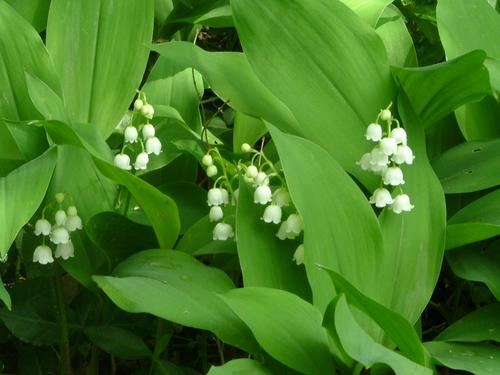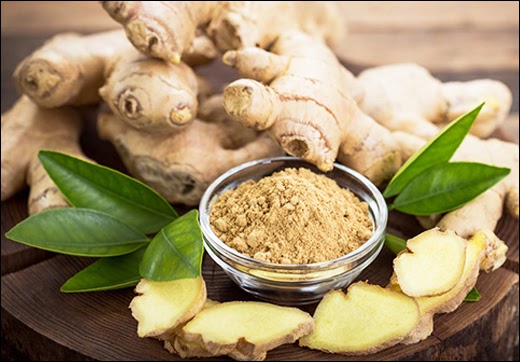By Beth Schreibman Gehring
“White coral bells upon a slender stalk,
Lilies of the valley dress my garden walk.
Oh, don’t you wish that you could hear them ring?
That will happen only when the fairies sing.”
– Traditional Folk Song
Surely, many of you cherish this beautiful children’s round, its authorship lost to time; its timeless melody, ethereal in nature, much like the lily of the valley itself. As a child, I sang this with my siblings, and now, I eagerly anticipate singing it with my grandson, Wolfie, for the very first time in my garden. When the lilies bloom, I’ll beckon my husband outside with his guitar, and together, the three of us will serenade these delicate blossoms.
Within the lush tapestry of nature’s bounty, few flowers evoke the same sense of delicate beauty and timeless elegance as the lily of the valley. With its dainty bell-shaped blossoms and intoxicating fragrance, this enchanting flower has captivated hearts and minds for centuries. Join me on a journey as we explore the rich history, cultural significance, and historically medicinal qualities of the lily of the valley.
Originating in Europe and Asia, the lily of the valley holds a special place in French culture, celebrated annually on May 1st during the “La Fête du Muguet” or Lily of the Valley Festival. Picture yourself strolling through the cobbled streets of a quaint French village, where the air is alive with the sweet scent of lily of the valley blossoms. “La Fête du Muguet” is a cherished tradition where these delicate blooms dance in the breeze, carrying whispers of luck and joy to all who encounter them. It’s a time of celebration, of gathering bouquets to share with loved ones, and of honoring the timeless magic of spring’s arrival. This tradition dates back to the Renaissance era when King Charles IX of France began the custom of presenting lily of the valley flowers to the ladies of his court as a special token. Legend has it that one of his knights, a gentleman named Louis de Gerard de Maisonforte, gave it to him as a token to bestow good luck and prosperity for the year ahead. Today, the tradition endures, with streets and markets adorned with fragrant bouquets of these delicate blooms symbolizing hope, happiness, and the arrival of spring.
In Great Britain, the lily of the valley is often associated with May Day festivities, where it symbolizes the arrival of spring and the promise of new beginnings. Traditionally, people would gather bouquets of lily of the valley to adorn their homes or to give as gifts to friends and family, much like in France. Additionally, in some parts of the country, it is believed that carrying a sprig of lily of the valley brings good luck and protection against evil spirits.
The lily of the valley is still celebrated for its beauty and fragrance. Many gardeners cultivate these charming flowers in their yards, relishing in their sweet scent and delicate appearance. Some may even incorporate them into wedding bouquets or floral arrangements, adding a touch of timeless elegance to special occasions. My son used to pick them for me every Mother’s Day, and who could forget the beautiful wedding bouquet carried by Kate Middleton, now the Princess of Wales, that was dripping with hundreds of these beautiful blooms. It was absolutely breathtaking.
Just as important as its cultural significance, the lily of the valley boasts a rich history as a medicinal herb and is found in many historically accurate herb gardens, although rarely used in the present day. Revered for its therapeutic properties, this humble plant had been used for centuries in traditional folk medicine to treat a variety of ailments. Historical records indicate its use in remedies for heart conditions, headaches, and even as a diuretic. However, caution must be exercised, as the lily of the valley contains potent cardiac glycosides, which can be toxic if ingested, and in fact, it is considered one of the most poisonous plants in many parts of the world. The leaves, flowers, and berries of the lily of the valley contain these toxic compounds, which can cause symptoms ranging from nausea and vomiting to irregular heartbeat and even death.
It’s crucial to exercise extreme caution when introducing lily of the valley to children and to avoid ingesting any part of the plant, even in small quantities. In my experience, teaching children about the plants in your garden early on can be incredibly beneficial. Children are naturally curious and eager to learn about the natural world, and with proper guidance, they can develop a deep respect for plants and their safety. Sadly, many beautiful native plants and flowers are being uprooted from gardens where they should thrive. By instilling plant safety knowledge in your children from an early age, you can ensure they understand how to interact safely with the flora around them, giving you peace of mind when they’re exploring outdoors.
Despite its potential for toxicity, the lily of the valley continues to hold a special place in the hearts of herbalists and gardeners alike. In my own gardens, the lily of the valley holds a cherished place every spring, its presence weaving a tapestry of memories and musings. I recall tender moments spent tending to its delicate blooms, inhaling the intoxicating scent that can only be captured by nature herself. In my own gardens, this delightful flower evokes cherished memories of days spent amidst its fragrant blooms, a sanctuary of tranquility and nostalgia.
Its exquisite beauty and captivating fragrance serve as a poignant reminder of the delicate balance between nature’s gifts and her potential dangers. This May as we marvel at the timeless allure of the lily of the valley, let us also heed the warnings and respect the potent powers of this enchanting flower. Whether adorning a bridal bouquet, gracing a May Day celebration, lending its glorious scent to perfumes, or simply brightening a corner of the garden, the gossamer lily of the valley serves as a reminder of some of the most profound mysteries and wonders of the natural world.
Tending to lilies of the valley is a labor of love that rewards both the gardener and the senses. They thrive in cool, shaded areas with well-drained soil rich in organic matter. When planting, ensure the rhizomes are spaced about 6 to 8 inches apart and buried just below the surface, as they prefer shallow planting depths. Regular watering is essential, especially during dry spells, but be cautious not to overwater as they are susceptible to rot. Mulching around the plants helps retain moisture and suppress weeds while providing insulation during winter. Pruning spent flowers and yellowing foliage encourages new growth and keeps the plant looking tidy. With proper care and attention, lilies of the valley will grace your garden year after year.
As I anticipate the arrival of spring and the blossoming of my beloved lilies, I am filled with a sense of anticipation and gratitude. My father tended to them lovingly in our yard, and as a child, I reveled in the simple joys of gathering bouquets and basking in their delicate scent. I loved to take a book outside with a mug of tea and read, nestled within a patch of those beautiful and fragrant blooms. Now, as I prepare to welcome Wolfie into my gardens, I eagerly anticipate the opportunity to share these precious moments with him, passing down the tradition and the love for nature’s gifts.
As we marvel at the timeless allure of the lily of the valley, let us also heed the warnings and respect the potent powers of this enchanting flower. It invites us to embrace the profound mysteries and wonders of the natural world, one delicate white blossom at a time.
Medicinal Disclaimer: It is the policy of The Herb Society of America, Inc. not to advise or recommend herbs for medicinal or health use. This information is intended for educational purposes only and should not be considered as a recommendation or an endorsement of any particular medical or health treatment. Please consult a health care provider before pursuing any herbal treatments.
Photo Credits: 1) Lily of the Valley flowers (Author’s photo); 2) Vintage postcard of Muguet Lily of the Valley Guerlain launch of Millesime perfume (Public Domian); 3) Kate Middleton with her wedding bouquet (dailymail.co.uk); 4) Vintage postcard of Lily of the Valley (Public Domain); 5) Lily of the Valley in vase (Unsplash, Dmitry Bukhantsov).
Beth Schreibman Gehring is a lover of all things green, delicious, growing, beautiful, magical, and fragrant. She’s also a lifestyle blogger, storyteller, and occasional wedding and party planner who uses an ever-changing seasonal palette of love, life, and food to help her readers and clients fall madly in love with their lives! Beth lives and works with Jim, her husband of 40 years, and is owned by 17 full sets of vintage dishes, hundreds of books, two cats, one dog, a horse, a swarm of wild honeybees, a garden full of herbs, fruit, vegetables, and old rambling roses, too many bottles of vintage perfume and very soon, a flock of heirloom chickens! She is the author of Stirring the Senses: How to Fall Madly in Love with Your Life and Make Everyday a Day for Candles & Wine (available on Amazon) and is currently working on a new book, Roses for Beauty, Flavor, and Fragrance. Join her in her gardens at https://bethschreibmangehring.substack.com/, or contact her at beth.gehring@stirringthesenses.com.


